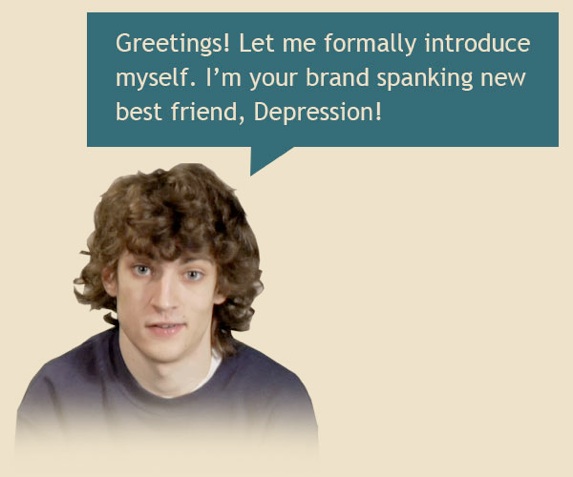Latest Public Service Radio Minute
Loss of EmploymentLoss of Employment, MP3, 1.3MB
Listen to or download all our PSAsSupport Our Work
Please donate so we can continue our work to reduce the stigma of psychiatric illness, encourage research, and support educational activities for behavioral health professionals and the public. Ways you can donate and help are on our Support and Donations page. Thank you!
More InfoLatest News Around the Web
Poor sleep decreases vaccine effectiveness, particularly for men
CNN (3/13, LaMotte) reports “sleeping less than six hours the night before you get” a vaccine “may limit your body’s response to the vaccine, reducing protection against the virus or bacteria, according to a…study.” Notably, “the impact of poor sleep on immune response to a vaccine was only scientifically relevant in men.” In terms of “why would a man’s immunity be affected when a woman’s was not,” researchers said, “The evidence is that these differences reflect hormonal, genetic and environmental differences, which can change over the lifespan, so these differences may be less prominent among older adults.” The findings were published in Current Biology.
Related Links:
— “Sleep affects your immunity after vaccination. Here’s how “Sandee LaMotte, CNN, March 13, 2023
Pediatric Mental Health, Workplace Violence, Reproductive Care Access Among Top 2023 Patient Safety Concerns, Report Says
Modern Healthcare (3/13, Devereaux, Subscription Publication) reports, “Pediatric mental health, violence against clinicians and uncertainty around reproductive care are among the most pressing issues for health system leadership to address this year, according to ECRI’s 2023 list of top 10 patient safety concerns” that “stems from recent studies, patient safety databases and in-depth conversations with industry stakeholders.” In addition, the report (PDF) “advises systems on how to solve industrywide problems such as delayed sepsis treatment, medication errors and preventable harm due to missed care.”
Related Links:
— “Modern Healthcare, Requires subscription
Family Bereavement Program Appears To Provide Long-Term Protection Against Depression, Study Suggests
Psychiatric News (3/13) reports a study published online March 7 “in the Journal of the American Academy of Child & Adolescent Psychiatry has found that children who together with their families participated in a bereavement program within 2.5 years of the death were less likely to experience depression up to 15 years later.” The researchers “enrolled 244 youth aged 8 to 16 who had experienced the death of a parent 3 to 30 months prior to the study and their caregivers for a randomized, controlled trial.”
Related Links:
— “Family Bereavement Program Offers Long-Term Protection Against Depression, Psychiatric News, March 13, 2023
Concerns raised over impact of prior authorization on patient access to care
Kaiser Health News (3/10, Sausser) reported, “Originally focused on the costliest types of care, such as cancer treatment, insurers now commonly require prior authorization for many mundane medical encounters, including basic imaging and prescription refills.” In a 2021 survey (PDF) from the “American Medical Association, 40% of physicians said they have staffers who work exclusively on prior authorization.” Moreover, “instead of providing a guardrail against useless, expensive treatment, pre-authorization prevents patients from getting the vital care they need, researchers and doctors say.” The federal government in December “proposed several changes that would force health plans…to speed up prior authorization decisions and provide more information about the reasons for denials,” and several states “have passed their own laws governing the process.” While groups including AMA “have expressed support for the proposed changes, some doctors feel they don’t go far enough.”
Related Links:
— “Insurance requirements for prior authorization may prompt ‘devastating’ delays “Lauren Sausser, Kaiser Health News, March 10, 2023
Screening For E-Cigarette Use Lower Than For Other Substances In Primary Care, Study Indicates
Healio (3/10, Bascom) reported “screening for e-cigarette use is much lower than screening for other substances in primary care, according to” a study that “evaluated data from 134,931 adults.” The researchers “reported that ‘screening rates for e-cigarette usage were almost two-thirds lower than those of combustible tobacco, alcohol and illicit substances.’” Furthermore, “being younger or using illicit substances or combustible tobacco was linked to a higher likelihood of being screened,” according to the findings published in the American Journal of Preventive Medicine.
Related Links:
— “Screening rates for e-cigarette use in primary care lower than for other substances “Emma Bascom, Healio, March 10, 2023
Foundation News
Nothing Found
It seems we can’t find what you’re looking for. Perhaps searching can help.

